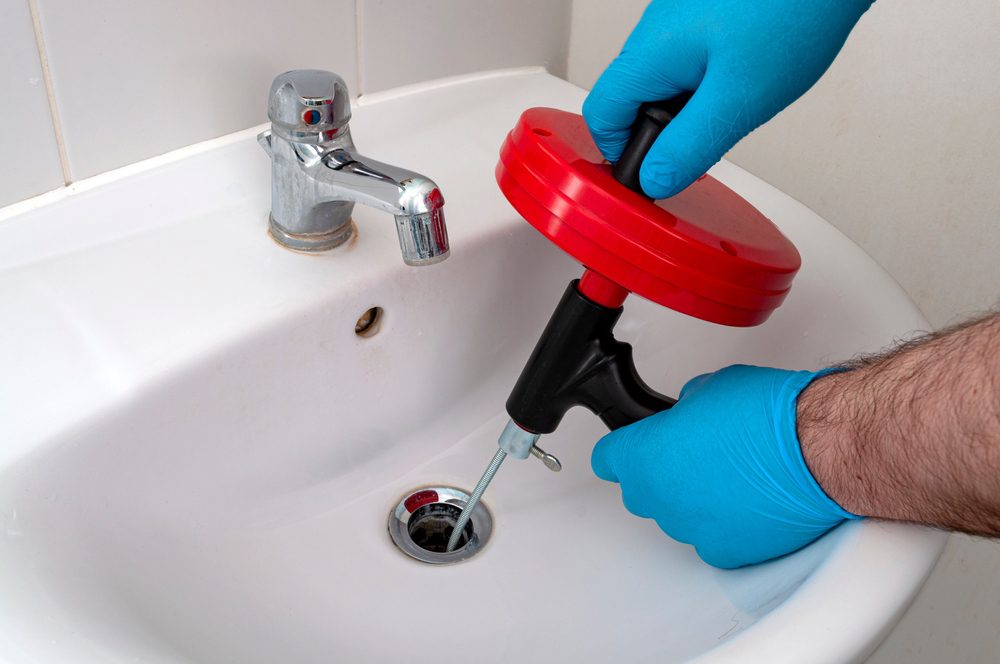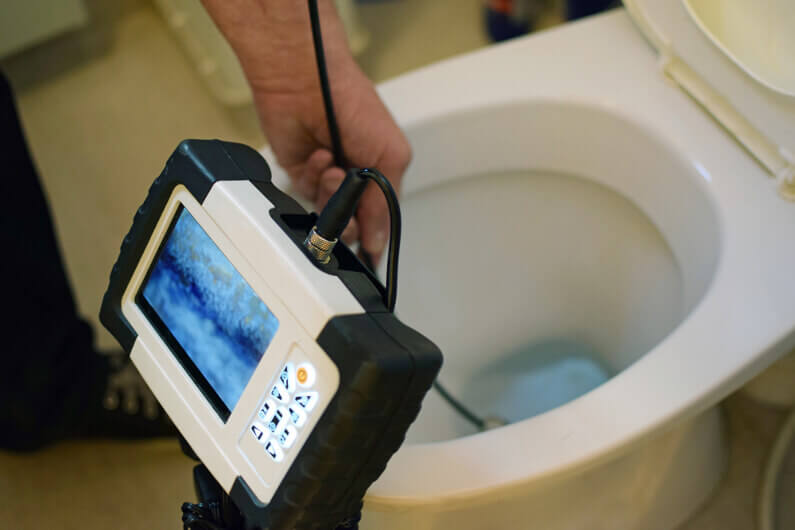Guidelines for Fixing a Blocked Drain Prior to Hiring Expert Plumbers
Guidelines for Fixing a Blocked Drain Prior to Hiring Expert Plumbers
Blog Article
Everyone has got their own individual concepts with regards to Some easy tips to fix blocked drains.

Intro
Handling an obstructed drainpipe can be an aggravating experience, disrupting everyday activities and possibly triggering damages to your home. However, prior to reaching out to plumbing professionals, there are actions you can require to attend to the problem yourself. In this overview, we'll check out do it yourself services and preventive measures to take on an obstructed drainpipe properly.
Determining the Problem
The very first step in dealing with a blocked drainpipe is recognizing the indicators. Slow drain, gurgling noises, foul odors emanating from drains pipes, or water backing up prevail signs of a blocked drainpipe. Recognizing these indicators early can aid stop additionally issues.
Typical Root Causes Of Blocked Drainpipes
Recognizing the elements that add to drain clogs is crucial for efficient resolution. Usual offenders include hair, soap scum, oil, food particles, and international objects like sanitary products or paper towels. Tree roots attacking underground pipelines can additionally cause significant blockages.
Do it yourself Solutions
For minor obstructions, a number of do it yourself services can be efficient. Putting boiling water down the drain can aid liquify grease and debris. Sodium bicarbonate and vinegar or a mixture of salt and baking soda can serve as all-natural cleansers. Using a bettor or plumbing snake to remove obstructions is one more choice.
Devices and Equipment
Having the right devices handy can make do it yourself drainpipe cleaning up more efficient. A bettor is a flexible tool for removing blockages in sinks, toilets, and showers. A plumbing serpent or auger can get to deeper clogs, while drainpipe cleansing chemicals can be used cautiously for persistent clogs.
Safety nets
To prevent future blockages, taking on preventive measures is critical. Mount drainpipe guards or filters to capture hair and particles prior to they go into the pipes. Frequently flush drains pipes with hot water to liquify grease accumulation, and stay clear of taking care of oil or solid waste down the drain.
When to Call a Specialist
While do it yourself remedies can settle small clogs, particular indications indicate the need for professional assistance. Persistent blockages, foul odors regardless of cleansing initiatives, or multiple drains pipes backing up concurrently are warnings that necessitate skilled intervention.
Choosing the Right Pipes Solution
When picking a plumbing solution, consider variables such as experience, licensing, and customer reviews. Choose a reputable plumbing with a performance history of high quality workmanship and transparent prices methods.
Cost Factors to consider
The cost of expert drainpipe cleaning services can vary depending upon the extent of the obstruction and the plumbing technician's prices. Demand quotes from multiple providers and inquire about any type of service charges to make certain transparency and prevent surprises.
Security Precautions
When attempting DIY drain cleaning, focus on safety and security. Put on protective handwear covers and eyeglasses to avoid contact with hazardous chemicals or bacteria. Never blend various drain cleaning products, as this can produce hazardous fumes.
Instance Researches
Real-life examples highlight the performance of do it yourself services and the importance of prompt expert intervention in dealing with drainpipe blockages.
Verdict
By complying with the tips detailed in this guide, you can successfully tackle blocked drains pipes and prevent future plumbing problems. Whether opting for do it yourself remedies or looking for professional aid, prompt activity is essential to maintaining a healthy pipes system and protecting the honesty of your home.
How to Clear a Clogged Drain Yourself (And When to Call In the Professionals)
What Can Clog a Drain
Dirt Skin flakes Hair Grease Soap scum Food Offset pipes Tree roots Small objects Mineral buildup DIY Tricks to Unclog a Drain
You can fix this! Once you have identified the source of the clog (or have a vague idea), you can try one or a combination of these fixes in order to clear your plumbing.
Wire Hanger or Snake
Untangle and clear out hair from a drainpipe with a homemade snake. Use a straightened-out wire hanger with a 90-degree angle hook to locate the clog and drag out any unwanted material.
Remember not to push the clog further down to where the wire hanger cannot reach! If you need to follow up with a plunger, give it a try. Your efforts might be more successful after it’s been wire-snaked.
If you want to get fancy and don’t have a wire hanger to spare, head to the store and pick up a hand-operated drain snake. You can get one for $10-$30. It may save you the hassle, and provide additional length to reach deep into the clogged pipe.
Plunger
A cup plunger has a suction cup attached to a wooden handle. The rubber creates a seal around the drain, and increases the pressure force of the plunger.
Plunge for 30-second increments to loosen the clog. This may need to be repeated over the course of 15-20 minutes. Once plunged, run the water to flush the remaining material out of the drain.
Remember– never use a plunger if you have used a chemical drain cleaner. These chemicals can splash up from the force of the plunger and cause serious injury or burns.
Boiling Water
Hot water can sometimes break up materials into a flushable amount. Dirt, grease, and soap buildup requires heat in order to unstick from surfaces.
Take your kitchen kettle and heat your water to a boil. Once it reaches a rolling boil, pour it directly down the drain into the blockage. Carefully follow with plunging, if necessary.
Don’t worry if this takes more than one try! It can often take multiple kettles and repeated plunging in order to clear a particularly stubborn clog.
Chemical Drain Cleaner
As a last resort, pick up a bottle of chemical drain cleaner. Drain-cleaning chemicals are potent, and not very good for the environment.
You may need to wear protective eyewear in gloves before handling your bottle of chemical drain cleaner. Follow the instructions printed on the bottle, and flush with water as soon as the instructions allow. Do not follow with plunging.
Baking Soda and Vinegar
As a safer alternative to chemical drain cleaner, baking soda and vinegar can create a chemical reaction that clears tough clogs.
Combine one cup of cleaning vinegar with one cup of boiling water, and set aside. Once you have done this, pour half a cup of baking soda down the drain. Give the baking thirty seconds to settle and cover a large portion of the problem drain.
Following the baking soda, pour down your vinegar and hot water solution. Once the vinegar and baking soda combine, the mixture will bubble and fix. Let this reaction fizzle in the drain for about an hour.
After an hour, follow with a kettle’s worth of hot water. The heat and liquid should flush out any remaining material.
When to Call a Plumber
If your DIY attempts haven’t cleared your clog drain, it’s time to call in a professional. It’s not worth losing access to your kitchen sink or high-traffic bathroom. A clog in a vital area can keep you from the things you’d rather be doing, and derail your routine.
Anytime a clog is causing water to spread is a time to call in a plumbing service. What starts out as a little bit of water can quickly grow into serious, expensive water damage.
Additionally, a serious clog can result in burst pipes or serious leaks. Make sure you know when to take it seriously!
https://myguysnow.com/how-to-clear-a-clogged-drain-yourself-and-when-to-call-in-the-professionals/

As a keen person who reads on 8 Tips For Clearing A Blocked Drain, I imagined sharing that post was sensible. Make sure you take a moment to promote this page if you enjoyed reading it. Thank you so much for taking the time to read it.
Click Here Report this page